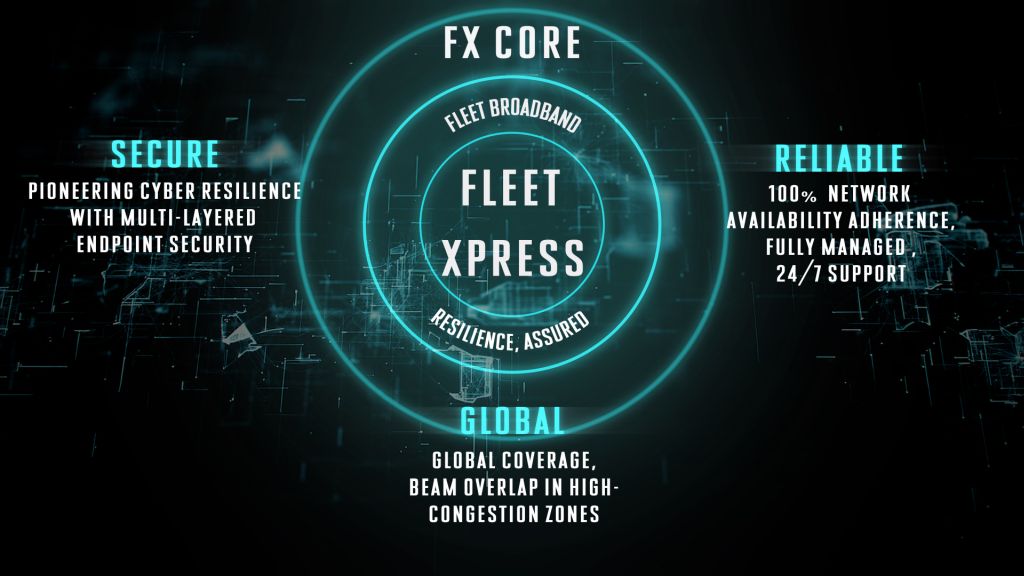
(www.MaritimeCyprus.com) Ben Palmer, president of Inmarsat’s maritime division, examines the global trends driving bandwidth uptake in shipping and introduces upcoming Inmarsat solutions that promise to unleash the full potential of maritime connectivity.
The shipping industry’s demand for communications bandwidth is growing exponentially. In a fast-evolving maritime regulatory landscape, shipowners are increasingly implementing data-driven processes and adopting digital shipboard solutions to cut emissions and achieve environmental compliance. Pending revolutionary developments in propulsion and fuel technology, this approach is delivering immediate, measurable and meaningful benefits: Ricardo Energy and Environment, a global environmental consultancy, predicts a 38% reduction in maritime greenhouse gas emissions by 2050 through digitalisation alone, a significant contribution towards the 50% reduction target set by the International Maritime Organization.
While digital transformation will be crucial to decarbonising the shipping industry, digitalisation itself relies on connectivity. With shipboard processes and technology becoming more sophisticated and prevalent, data usage is skyrocketing. A study undertaken by Inmarsat, reveals that data usage is on the rise among all commercial vessel types. In 2022, total network usage in the maritime sector is 45% higher than in 2021. Year-on-year data usage was highest among container shipping companies, more than doubling (108%) in June 2022 compared to June 2021, while the use of connectivity increased by 70% among oil tanker operators and by 47% on bulk carriers over the same period.

“Maritime data usage is a leading indicator of economic activity and of the international trade being carried by the shipping industry, which accounts for 90% of global trade volumes,” says Palmer. “More and more shipping companies are upgrading their satellite communications services and adopting new technologies for applications including route-planning, ship-to-shore broadband data transfers and to maximise fuel efficiency. They are also ensuring that their crews remain connected with family and friends while at sea, the mandatory requirement now recognised by the Maritime Labour Convention.
“Shipowners are rightly looking to reduce their environmental footprint in line with tightening regulations. To do so, they require insight into the efficiency of multiple shipboard systems and the ability to gauge the impact of external factors on machinery and overall vessel performance. This means collecting, storing, and analysing significant volumes of data, and then transferring this data to various stakeholders – a series of processes that relies on stable network connections and ample bandwidth.”
The advanced digital solutions that allow owners to act on insights from data analysis and minimise emissions also depend on connectivity. Like performance monitoring, the cloud-based tools that support greater ship sustainability demand high network stability and considerable bandwidth.
Yet, maritime connectivity is also enabling an array of data-intensive processes whose benefits go beyond supporting environmental compliance. In addition to running applications to enhance performance in other areas of vessel operations, such as safety or onboard productivity, shipowners are increasingly implementing video conferencing as well as remote inspections and maintenance to reduce costs and downtime. As a result, a monthly average of the total maritime network usage for business operations has increased by more than 30% in the past 12 months.
However, according to Palmer, the single greatest factor behind the exponential increase in data usage at sea is a growing appreciation for the importance of crew welfare.
“Since the onset of the Covid-19 pandemic, several high-profile incidents have drawn attention to the difficulties facing seafarers, with the infamous crew-change crisis depriving shipboard personnel of timely shore leave and repatriation,” he says. “Many owners and managers have responded to this situation by investing in better connectivity for crew and offering access to digital services such as 24-hour helplines. This trend has contributed to a 50% increase in total crew network use in the last year.”

In a maritime industry where requirements are constantly evolving and data usage is rising fast, existing connectivity services are being pushed to their limits. Inmarsat has invested considerable time and resources into developing a new generation of connectivity solutions and a step-change in the capacity available over its networks with a further 7 Global Xpress satellites entering service by 2025.
For example, Fleet Xpress Enhanced – the latest evolution of Inmarsat’s transformational connectivity service - offers a versatile, integrated, and modular solution powered by the world’s most advanced satellite network. Inmarsat’s Global Xpress Ka-band network. The solution enables real improvements in operational efficiency, sustainability, and crew welfare and allows owners to upgrade their bandwidth allowance and adopt new applications as their needs change. The new-and-improved offering provides Inmarsat partners with a platform to deliver their value-added services and host applications, with shipping companies, in turn, gaining access to an array of functionality ranging from email and basic office tools to the latest IoT-powered solutions.

Fleet Xpress Enhanced enables a flexible, step-by-step approach to digital transformation. As such, it supports long-term efforts toward decarbonisation and the improvement of crew welfare. Crucially, the solution is future-proofed for seamless integration with other communications networks; specifically, Inmarsat’s planned multi-dimensional network - ORCHESTRA. This approach promises to redefine connectivity at scale with the highest capacity for mobility worldwide and at hot spots around the globe.
“ORCHESTRA – so named because it brings together multiple components in perfect harmony to produce something far greater than the sum of its parts – is designed to meet the accelerating bandwidth requirements of modern shipping,” says Palmer. “It combines our geosynchronous – or GEO – networks, ELERA and Global Xpress, with terrestrial 5G and targeted low-Earth orbit – or LEO – satellites.”
The result is a single, advanced solution for global mobility that will offer the fastest average speeds and the lowest average latency of any network – either planned or in existence – with seamless connectivity around the world.
“At a time when shipowners’ requirements are evolving rapidly, and maritime data use is skyrocketing as a result, our aim is to give shipping companies a clear and flexible path to digital transformation – whatever stage of their journey they have reached,” says Palmer. “Wherever the data-driven vessels are sailing – whether in an isolated stretch of water or a bustling shipping hub – they will be able to rely on high-speed connectivity to facilitate safe, efficient and sustainable operations. The only limit to their potential is the creativity of the technology solution and applications for which Inmarsat will offer continuous, global access.”













